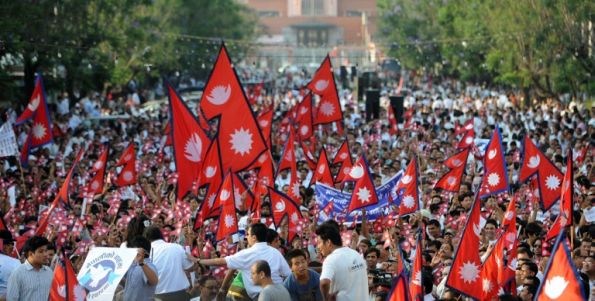1962
•Manhendra comes to power and implements the panchayat system of government. This allowed the king to rule with the help of councils (panchayat).
1987-1990
•Tensions between Nepal and India grow. This results in the interruption of trade, expulsion of Nepalese from Indian states, requirement of a work permit for the Indians working in Nepal, which worsens the Nepalese economy.
1996-2006
•Nepalese Civil War (People’s War)
•Result of the government’s decision to focus on industrializing Kathmandu while marginalizing women and people in poverty. As well as conflicts and disagreements between the royal army, different political parties, the monarch and the Maoists
•Maoists were considered terrorists
•At least 14 soldiers of the Royal Nepalese Army, 50 police officers, and several other government officials, and over 50 Maoists were killed
•State of emergency was declared
June 1st, 2001
•Nearly all members of the royal family were massacred by the Prince Dipendra who during a family dinner got into a heated argument with his mother over his decision to marry a foreign woman
•10 members of the family were killed and four were wounded
April 25, 2015
•8.1 Magnitude shook Nepal for 56 seconds
•Killed more than 9,000 people and injured over 25,000
•Thousands of people lost their homes and were displaced
Nepalese Civil War
Until this day people in Nepal are suffering from the aftermath of the Civil War. The war, which lasted from 1996 to 2006, left Nepal devastated. As stated in chapter seven of the reading, during the war, 13,000 people died, 200,000 people were displaced in the country, nearly 2 million people had emigrated, over 10,000 girls were taken to India to work in dangerous conditions and to be used for sex, approximately 200,000 children were killed in landmines each year, hundreds of school were destroyed, and so on. During these years the population grew, the rate of unemployment increased, the literacy rates remained low (specially among women), and resources were scarce. Due to the fact that the civil war ended only 11 years ago, Nepal is still recovering from the events that took place during the war as well as the deadly earthquake of 2015.
When we go to Nepal and we begin to ask questions regarding their socioeconomic status, the changes that have occurred, and how they have adapted to these changes with scarce resources, they will most likely all link back to these events. There are a lot of people that are still displaced within the country, and about one half of the population does not know how to read, most Nepalese remain under the poverty line, and so forth. Being that the country is so impoverished, it may be visible that they have not been able to adapt to the effects of climate change.

Nepalese government tries to unite the people in fighting against the Maoists of Nepal.
This past summer India, Bangladesh, and Nepal were the victims of flooding which left over 1000 people dead. A large number of people were forced to leave their homes and try to find a safe place in which to be in. According to the NYTimes article, the seasonal monsoon rains that occur during the summertime have affected 41 million people. It is nearly impossible to relocate millions of people in countries that are already densely populated so most of these people have been left to sleep where they can. Scientists have become concerned because it is one of the most severe flooding that have occurred in South Asia and they predict that with warmer temperatures the flooding will be much worse.

Floods in India reach 4 feet high.
Citation
Gettleman, Jeffrey. “More Than 1,000 Died in South Asia Floods This Summer.” The New York Times. August 29, 2017. Accessed September 11, 2017. https://www.nytimes.com/2017/08/29/world/asia/floods-south-asia-india-bangladesh-nepal-houston.html.
Matthew, Richard and Upreti, Bishnu “Environmental Change and Human Security in Nepal” MIT Press 137-154
